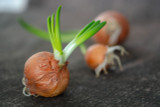A Simple Guide To Planting & Growing Cucumbers
On the list of crops that home gardeners prefer to grow, cucumbers are undoubtedly near the top. Why wouldn't they not be? They are the most popular vegetable for pickling, in addition to being great to eat raw or in salads. With a salad garden kit, many have found it both rewarding and cost-effective to have vegetables like cucumbers readily available in their home. However, cultivating cucumbers may be challenging for many backyard gardeners. Keeping their plants healthy and fruitful can be difficult for a variety of reasons. This includes the struggle of helping the plants grow and mature, fending off disease, dealing with pests, or simply not having their flowers turn into fruit. Here are six awesome tips for growing cucumbers and getting a plentiful harvest!
Grow from Seeds Rather than Transplants
Cucumbers may be grown from transplants, but it is much preferable to produce them from seed, much like many other types of vegetable seeds. One of the fastest-growing vegetable plants is cucumber. By growing from seed, you avoid the stress of transplantation and the need to adjust to significant weather changes or other circumstances.
Early in the growth season, young, delicate foliage is frequently stunted and damaged when transplanted. That's why it's important to let your cucumber plants grow from seed to full maturity.
Rotate Your Crops
Cucumbers are rather vulnerable to disease and pest attacks. Sadly, both may already be present in the soil and ready to strike if you grow your plants in the same exact location year after year.
Diseases from the soil can survive there for three to five years once they become established. Yet when bugs establish a home on a plant in a particular place, they frequently lay eggs and return every growing season.
By growing them in the same area, it's easier for your cucumbers to be harmed by unwanted pests. Moreover, fresh nutrients from new soil are also beneficial to fuel rapid development.
The nutrients that new plants most need have oftentimes already been depleted if you plant new seeds in the same soil as previous cucumber plants.
Provide Tons of Sunlight
Cucumbers require a lot of sunshine in order to grow healthily. The plant mainly relies on photosynthesis to develop robust, resilient, and fruitful vines, and photosynthesis requires sunlight. Always place your crop in a location that receives at least six to eight hours of sunshine each day to make this happen. Planting your plants with morning sunlight in mind is the single best thing you can do to give them a chance to avoid health problems and produce abundantly. This is because early morning sunlight helps to dry off vines and foliage from the morning dew. Dew, if allowed to linger, can foster the growth of blight and mildew.
Last but not least, remove any damaged plant leaves as soon as you can if you do spot them throughout the season. This can prevent mildew and other diseases from rapidly spreading and ruining your cucumber plants. Happy gardening!
Recent Posts
-
The Secrets To Growing Radishes In Containers
Container gardening is a popular way to grow vegetables like radishes. Growing radishes in container …26th Jun 2023 -
How To Successfully Grow Onions From Seeds
Many recipes use onions to give a strong taste and smell. Growing onions from seeds is better than b …26th Jun 2023 -
How To Grow Radishes At Home: A Step-By-Step Guide
Growing your radishes at home can be a rewarding and delicious endeavor. These crispy and spicy vegg …26th Jun 2023





